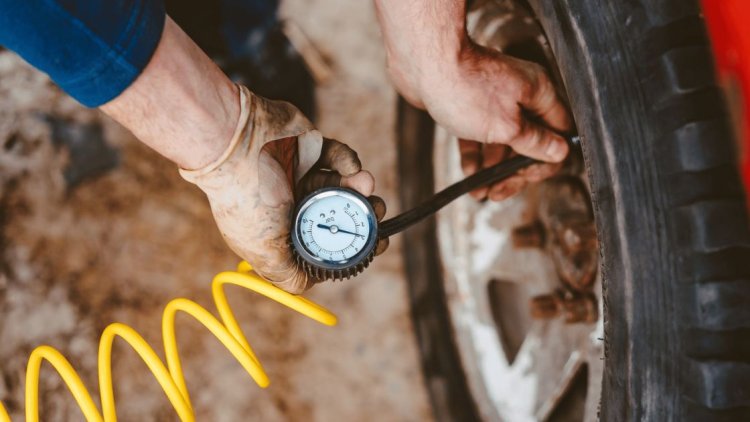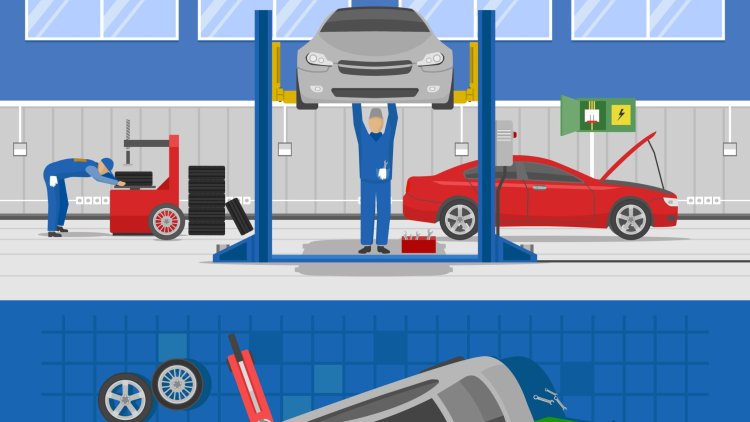Enhancing tire pressure sensors for safer rides with simulation
Keep your ride safe and efficient with the latest in tire pressure monitoring technology. Learn how Schrader Electronics uses advanced simulation tools to design and improve their sensors

Tire pressure is the forgotten hero of automobile performance. When properly inflated to the recommended pressure, tires take on the precise shape that the manufacturers intended. When air pressure drops, tires need more force to move. Drivers may easily forget to check their tyre pressure in the daily rush of getting from one place to another. Punctures can occur and go for a long time without being noticed. It is crucial to have a built-in sensor that alerts the driver when it is time to add more air. The ability to simulate allows for the precise design of these sensors, which calls for careful attention to minute details.
The driving experience is guided by tire pressure sensors.
Low tire pressure has a number of negative effects, one of which is a significant decrease in fuel efficiency. Additionally, vehicles with regular tires release a significant amount of greenhouse gases into the atmosphere. Additionally, a vehicle with low tire pressure may have trouble stopping or may slide on wet surfaces. The pressure monitoring sensors that warn drivers if a tire's pressure is higher than recommended must be installed on wheels by automakers. The market leader in tire pressure monitoring technology is Schrader Electronics.
Major automakers like GM, Ford, and Mercedes-Benz purchase the 45 million sensors that Schrader Electronics produces each year. For a sensor to endure road conditions for the entire life of a vehicle, reliability, and durability are crucial. Shock, vibration, pressure, humidity, temperature, and a number of other dynamic forces are all taken into account when designing for the required functionality, shape, and materials.
Creating better sensors with FEA
Finite Element Analysis (FEA) and multiphysics simulation have been used by mechanical design engineer Christabel Evans of Schrader Electronics to successfully create effective tire sensors for various automobiles.
The popular Schrader product known as the Hi-Speed Snap-In Tire Pressure Monitoring Sensor (TPMS), which is shown in the above figure, is installed directly on the wheel assembly and monitors tire pressure while the car is moving. A warning sound alerts the driver that it's time to stop and re-inflate the tires when the tire pressure falls too low.
Engineers at Schrader Electronics reduced experimental costs while also assessing design performance by simulating their designs using FEA and iterating the process. Schrader Electronics learned that the cost of the available solutions made them unaffordable if they wanted to use FEA software across their entire workforce. They made use of the CAD Import Module and the COMSOL Multiphysics Structural Mechanics Module. They conducted tests that compared standard samples with simulations in order to assess the software and establish confidence in the results.

Improved simulation software increase sensitivity and toughness
The researchers gradually added more natural elements to their simulations, such as static elements like pressure and crush load as well as dynamic loads like centrifugal force and environmental temperature variations. The Hi-Speed Snap-In TPMS is a transmitter that is also the shell of a circuit connected to a valve stem by a cap and enclosed in an enclosure. The valve stem connects to the rim of the tire and opens to let air through. The Hi-Speed TPMS valve shape contains a rib that usually keeps the assembly in the rim hole.
Evans and her team evaluated several models simultaneously before choosing the best one and making design improvements. They conducted experiments using a range of forms, materials, and loads.
Thanks to different license options, researchers at Schrader were able to learn and deploy COMSOL Multiphysics software much more quickly than comparable simulation products and perform simpler tasks. Pursuance to Evans, "COMSOL is user-friendly & simple to learn—the engineers picked it up right away."
Schrader expects to use simulation tools to bolster their development-focused approach while initially concentrating on design and growth, with some attention paid to failure analysis. Every new design aims to improve road safety, environmental impact, and driver comfort.
FAQs
a. What does a sensor for tire pressure monitoring do?
A tyre pressure monitoring sensor's job is to notify the driver when it's time to top off the tyres' air pressure in order to keep them at the recommended level. This enhances road safety, fuel efficiency, and puncture prevention.
b. Finite Element Analysis (FEA): What is it?
A simulation technique called Finite Element Analysis (FEA) is used to examine how an object or system behaves under various circumstances. FEA is used to simulate the design and performance of tire pressure monitoring sensors in order to lower experimental costs and evaluate the sensors' functionality.
c. What are the ways tire pressure monitoring sensors boost fuel economy?
Tires assume the exact shape that their designers intended when properly inflated to the recommended pressure. Because of this, they move with less force, which improves fuel efficiency.
d. What advantages do simulation tools offer for creating tire pressure monitoring sensors?
Software for simulation can help evaluate design performance and lower the cost of experiments. Engineers can find design flaws and make improvements before creating physical prototypes by simulating various conditions and scenarios.
e. Which automakers use Schrader Electronics' tire pressure monitoring sensors?
The 45 million sensors that Schrader Electronics produces each year are bought by significant automakers like GM, Ford, and Mercedes-Benz.
f. What forces and variables are taken into account when creating tire pressure monitoring sensors?
Engineers take into account variables like shock, vibration, pressure, humidity, temperature, and dynamic forces like centrifugal force when designing tyre pressure monitoring sensors.












